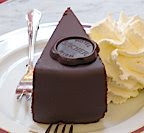
" As for Obama, Thank God for his ears.
A good-looking president isn't good for cartooning."
PAT OLIPHANT ( from Cartoonists draw blank on Obama By DAVID MARK, POLITICO )
In the morning after a quick scan of the headlines and front page, I head for the opinion page of (at least) the NYT and Washington Post and then the editorial cartoons. Everyone reads the newspaper (or computer screen) in a different sequence. I need my editorial comic "fix". The only remaining "good" comic illustration in newspapers is contained in these frames. We'll discuss the wasted trash on the "funny page" of newspapers in a future blog.
The Chicago Tribune has more editorial Cartoons in one place (online) than any other paper but for quick browsing I prefer The Washington Post. The 9 syndicated editorial cartoonists shown in The Post plus Tom Toles and Ann Telnaes are "top" contenders in the Poison Pen league. They cover the field from right to left.
My personal favorites are Pat Oliphant and Mike Luckovich. Both are Pulitzer Prize winning artists capable of annihilating politicians globally. Their drawing styles are completely different but they make dramatic use of black and white tones with generous use of cross-hatching techniques to achieve middle values. The Obama face and figure in both of these cartoon panels - for now - is neutral. A spare body frame with big ears and a sun tan. Compare that style to conservative editorial cartoonist Glenn McCoy's rendering of O. His unsparing rendering of big ears, big nose and goofy eyes is brutal.
Ann Telnaes, another Pulitzer winner, adds a delightful animated twist to Editorial Cartoons. Telnaes uses actual sound bites from newscasts. Then, she combines those sound bites with a minimalist rendering of politicos faces, animals, machinery - whatever it takes. A former Disney artist, she combines the limited animation style of the early Hanna-Barbara studio (Yogi Bear, etc) with savage wit.
Mike Peters is a syndicated Editorial Cartoonist and Pulitzer Prize winner from Dayton, OH. Peters has an excellent web site. His drawings are genuinely funny without losing their barbs. Mike uses color very effectively and his site has a very effective archive>farewells which honors people from Dr.Suess to John Denver.
Michael Ramirez is a two-time Pulitzer Prize-winning, conservative, editorial cartoonist for Investors Business Daily. He was born in Japan and graduated from UC, Irvine. He became interested in editorial cartooning when his first cartoon for the college newspaper, lampooning candidates for student office, had the student assembly demanding an apology. Ramirez is a superb draughtsman and his color cartoons are works of controversial art.
There are scores of other brilliant Editorial Cartoonists and I would appreciate your sending me their names. There are also great illustrators like Ed Sorel, Brad Holland, Barry Blitt and others whose art enlivens The Atlantic, The New Yorker, Vanity Fair and the editorial pages and magazine section of The Sunday New York Times and Washington Post. We'll cover them in a future blog.
Finally, back to Obama's ears... the Oliphant quote that begins this blog is a transient statement. As each President's term progresses so do the editorial cartoonists' perception of the man or woman in the cartoon frame - the ears get bigger, the nose gets bigger, the figure grows larger or diminishes in size. Keep watching for things like the war helmet that Gary Trudeau created to represent George W. Bush in his editorial comic strip, Doonesbury.






005.jpg)







